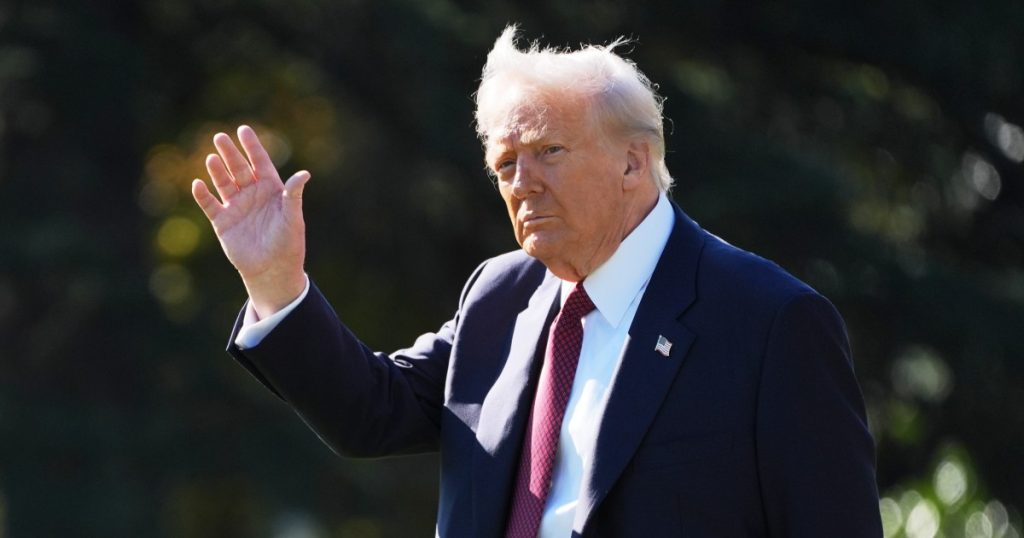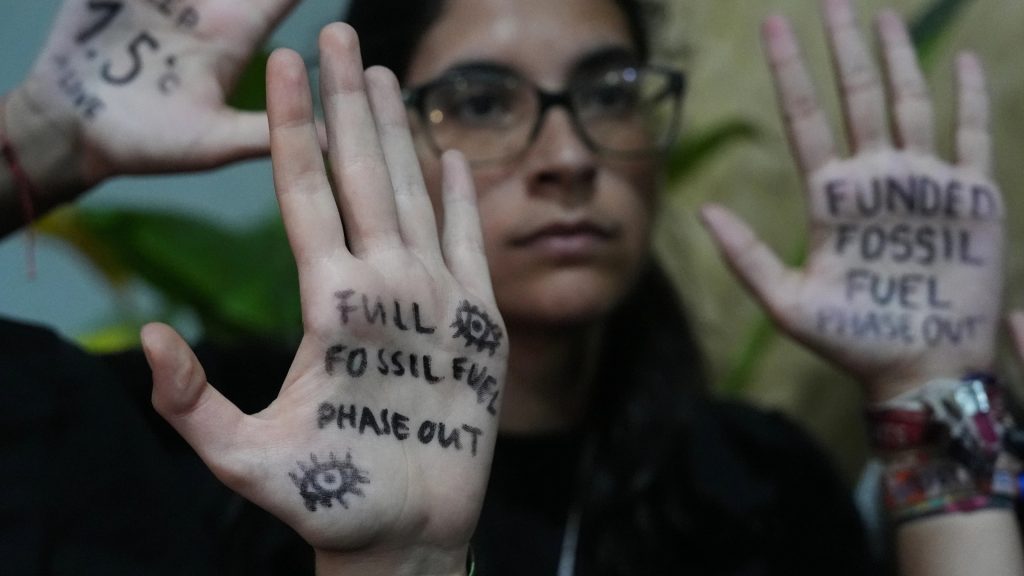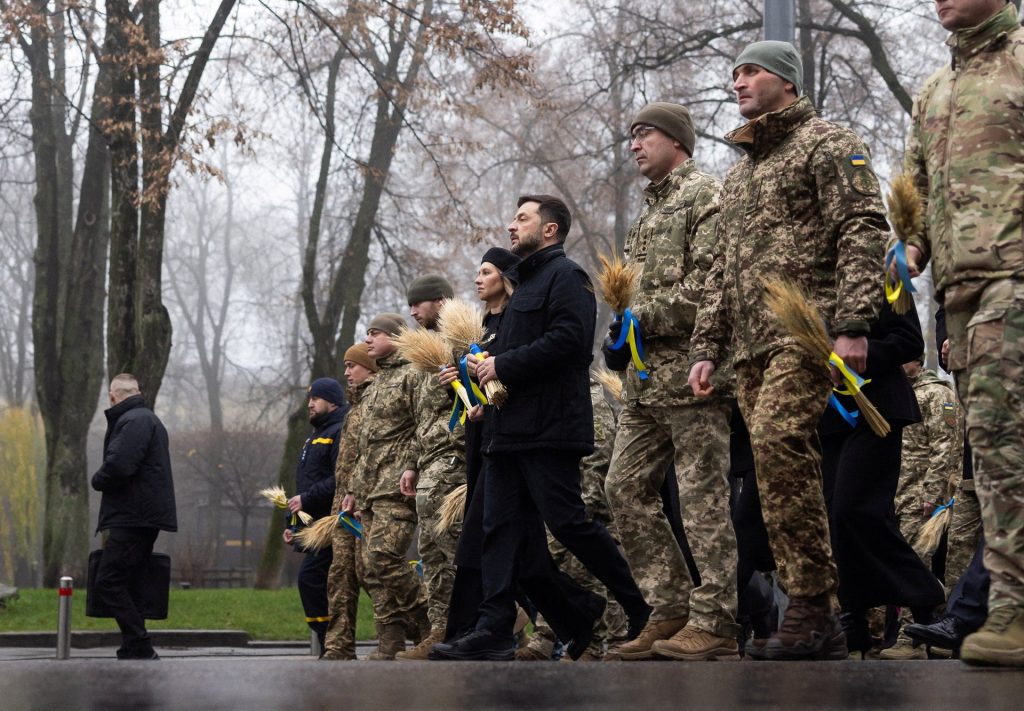Trump launches ‘Genesis Mission’ to harness AI for scientific breakthroughs

Trump signs order to integrate supercomputers and data assets in order to create ‘AI experimentation platform”. United States President Donald Trump has unveiled a national initiative to mobilise artificial intelligence (AI) for accelerating scientific breakthroughs. Trump signed an executive order on Monday to establish “The Genesis Mission”, the latest iteration of his administration’s aggressive strategy for spurring AI development through deregulation, infrastructure investment and public-private collaboration. Recommended Stories list of 4 itemsend of list Trump’s order directs US Energy Secretary Chris Wright to unite scientists and technologies at the country’s 17 national laboratories into “one cooperative system for research”. Under the initiative, US supercomputers and data resources will be integrated to create a “closed-loop AI experimentation platform”, according to the order. The White House, which likened the initiative to the Apollo programme that put the first man on the moon, said priority areas of focus would include the “greatest scientific challenges of our time,” such as nuclear fusion, semiconductors, critical materials and space exploration. Michael Kratsios, the White House’s top science adviser, said the initiative took a “revolutionary approach” to scientific research. “The Genesis Mission connects world-class scientific data with the most advanced American AI to unlock breakthroughs in medicine, energy, materials science, and beyond,” Kratsios said. Chipmaker Nvidia and AI startup Anthropic said on Monday that they were partnering with the Trump administration on the initiative. “Uniting the National Labs, USG, industry, and academia, this effort will connect America’s leading supercomputers, AI systems, and next-generation quantum machines into the most complex scientific instrument ever built – accelerating breakthroughs in energy, discovery, and national security,” Nvidia said in a social media post, referring to the US government (USG). Advertisement Since re-entering the White House, Trump has made cutting red tape to fast-track the development of AI a key plank of his economic agenda. Last week, Trump called on the US Congress to pass legislation to create a national standard for AI, while criticising state governments over their laws regulating the emerging technology. “Overregulation by the States is threatening to undermine this Growth Engine,” Trump said on his platform, Truth Social. “We MUST have one Federal Standard instead of a patchwork of 50 State Regulatory Regimes.” Benjamin H. Bratton, an AI expert at the University of California, San Diego, welcomed the initiative as a move toward the “diffusion” of the technology. “It is less important ‘whose’ AI people have access to than they have universal access at all,” Bratton told Al Jazeera. “Most attempts to throttle AI in the USA and EU come from cultural, economic and political incumbents protecting their turf.” “Those locked out of positions of artificially scarce social agency have the most to gain,” Bratton added. “I support diffusion, not any particular administration.” Adblock test (Why?)
Viola Ford Fletcher, survivor of 1921 Tulsa Massacre, dies age 111

Fletcher fought for greater recognition of one of the deadliest incidents of race violence in US history. By The Associated Press Published On 25 Nov 202525 Nov 2025 Click here to share on social media share2 Share Viola Ford Fletcher, one of the last survivors of Oklahoma’s 1921 Tulsa Massacre, has died at age 111. Despite her advanced age, Fletcher was a well-known activist thanks to her work trying to win justice for the victims of one of the worst episodes of racial violence in United States history. Recommended Stories list of 4 itemsend of list “Today, our city mourns the loss of Mother Viola Fletcher. She was a survivor of one of the darkest chapters in our city’s history and endured more than anyone should,” Tulsa Mayor Monroe Nichols wrote in a Facebook post. “Mother Fletcher carried 111 years of truth, resilience, and grace and was a reminder of how far we’ve come and how far we must still go.” Fletcher was seven years old at the time of the Tulsa Massacre in Oklahoma, a state living under the Jim Crow system that segregated the US South from the end of the 1800s until the Civil Rights Movement of the 1960s. The massacre began on May 31, 1921, when police arrested 19-year-old Dick Rowland, a Black shoeshiner, over allegations that he had assaulted a white woman, according to a report by the US Justice Department’s Civil Rights Division. As a survivor of the Tulsa Race Massacre, Viola Ford Fletcher bravely shared her story so that we’d never forget this painful part of our history. Michelle and I are grateful for her lifelong work to advance civil rights, and send our love to her family. https://t.co/km7RXnDKcW — Barack Obama (@BarackObama) November 25, 2025 When a group of white men gathered at the courthouse calling for Rowland to be lynched, a group of Black men from a nearby community responded and tried to protect him before “all hell broke out”, the report said. Advertisement Over the next two days, vigilante groups and law enforcement looted and burned down 35 blocks of Tulsa’s Greenwood District, which was then home to one of the wealthiest Black communities in the US. The Bureau of Labour Statistics in 2024 estimated that the scale of the damage was around $32.2m when adjusted for inflation. As many as 300 residents of Tulsa were killed and another 700 injured, the report said, although the final tally is unknown because many were buried in unmarked graves. Survivors like Fletcher and her family were forced to leave the area. Left destitute, her family became sharecroppers, a form of subsistence work where farmers give over almost all their harvest to their landlord. Rowland was never charged, after Sarah Page, the lift operator he was accused of assaulting, said that she did not want to prosecute the case. Despite the scale of devastation, the Tulsa Massacre received limited national attention until Oklahoma state launched an investigative commission in 1997. Efforts to win compensation for victims in 2001, however, failed due to the statute of limitations. On the centennial anniversary of the massacre, Fletcher testified before the US Congress in 2021 about her experiences and co-authored a memoir, Don’t Let Them Bury My Story, with her grandson in 2023. Fletcher was mourned by US leaders like former President Barack Obama. “As a survivor of the Tulsa Race Massacre, Viola Ford Fletcher bravely shared her story so that we’d never forget this painful part of our history. Michelle and I are grateful for her lifelong work to advance civil rights, and send our love to her family,” Obama posted on X. Adblock test (Why?)
‘Everyone was startled’: Thai woman due for cremation found alive in coffin

Reports say doctors diagnosed the woman with critically low blood sugar, likely leading to her weakened condition. Published On 25 Nov 202525 Nov 2025 Click here to share on social media share2 Share A woman in Thailand has shocked staff at a Buddhist temple when she started moving in her coffin after being brought in for cremation. Wat Rat Prakhong Tham, a temple in the province of Nonthaburi on the outskirts of the capital, Bangkok, posted a video on its Facebook page, showing a woman lying in a white coffin in the back of a pick-up truck, slightly moving her arms and head, leaving temple staff bewildered. Recommended Stories list of 3 itemsend of list Pairat Soodthoop, the temple’s general and financial affairs manager, told The Associated Press news agency on Monday that the 65-year-old woman’s brother drove her from the province of Phitsanulok to be cremated. He said they heard a faint knock coming from the coffin. “I was a bit surprised, so I asked them to open the coffin, and everyone was startled,” he said. “I saw her opening her eyes slightly and knocking on the side of the coffin. She must have been knocking for quite some time.” According to Pairat, the brother said his sister had been bedridden for about two years, when her health deteriorated and she became unresponsive, appearing to stop breathing two days ago. The brother then placed her in a coffin and made the 500km (300-mile) journey to a hospital in Bangkok, to which the woman had previously expressed a wish to donate her organs. The hospital refused to accept the brother’s offer as he didn’t have an official death certificate, Pairat said. His temple offers a free cremation service, which is why the brother approached them on Sunday, but was also refused due to the missing document. Advertisement The temple manager said that he was explaining to the brother how he could get a death certificate when they heard the knocking. They then assessed her and sent her to a nearby hospital. The abbot said the temple would cover her medical expenses, according to Pairat. According to the Thailand News website, doctors later diagnosed the woman with severe hypoglycaemia, or critically low blood sugar, and confirmed she had not experienced cardiac or respiratory failure. Adblock test (Why?)
Malaysia says it will ban social media for under-16s from next year

Move comes as a growing number of countries are rolling out measures to limit children’s exposure to digital platforms. By Reuters Published On 24 Nov 202524 Nov 2025 Click here to share on social media share2 Share Malaysia plans to ban social media for users under the age of 16 starting from next year, joining a growing list of countries choosing to limit access to digital platforms due to concerns about child safety. Communications Minister Fahmi Fadzil said on Sunday the government was reviewing mechanisms used to impose age restrictions for social media use in Australia and other nations, citing a need to protect youths from online harms such as cyberbullying, financial scams and child sexual abuse. Recommended Stories list of 4 itemsend of list “We hope by next year that social media platforms will comply with the government’s decision to bar those under the age of 16 from opening user accounts,” he told reporters, according to a video of his remarks posted online by local daily The Star. The effects of social media on children’s health and safety have become a growing global concern, with companies including TikTok, Snapchat, Google and Meta Platforms – the operator of Facebook, Instagram and WhatsApp – facing lawsuits in the United States for their role in driving a mental health crisis. In Australia, social media platforms are poised to deactivate accounts registered to users younger than 16 next month, under a sweeping ban for teenagers that is being closely watched by regulators around the world. France, Spain, Italy, Denmark and Greece are also jointly testing a template for an age verification app. Malaysia’s neighbour Indonesia said in January it planned to set a minimum age for social media users, but later issued a less stringent regulation requiring tech platforms to filter negative content and impose stronger age verification measures. Advertisement Malaysia has put social media companies under greater scrutiny in recent years in response to what it claims to be a rise in harmful content, including online gambling and posts related to race, religion and royalty. Platforms and messaging services with more than eight million users in Malaysia are now required to obtain a license under a new regulation that came into effect in January. Adblock test (Why?)
Gunfire, explosions at paramilitary HQ in Pakistan’s Peshawar: Reports

DEVELOPING STORYDEVELOPING STORY, Gunmen, suicide bomber attacks the Federal Constabulary headquarters in Peshawar, media reports say. Published On 24 Nov 202524 Nov 2025 Click here to share on social media share2 Share Gunmen and at least one suicide bomber have attacked a paramilitary force headquarters in Pakistan’s northwestern city of Peshawar, according to media reports. The Dawn daily reported on Monday that the headquarters of the Federal Constabulary (FC) was “under attack” and that a suicide bomber had detonated their explosives at the gate to the complex. Recommended Stories list of 4 itemsend of list The daily cited police and security sources in Peshawar. It cited the sources as saying that three fighters had been killed and that security forces had cordoned off the area. It added that three FC officers were killed in the attack and that two others were wounded. The Reuters news agency reported that the complex was hit by two suicide bombers and that at least three people had been killed. “The first suicide bomber first carried out an attack on the main entrance of the constabulary, and the other one entered the compound,” a senior official who spoke on condition of anonymity was quoted as saying. “Law enforcement personnel, including the army and police, have cordoned off the area and are carefully handling the situation as we suspect there are some terrorists inside the headquarters,” the official added. The headquarters of the force is located in a crowded area, close to a military cantonment. Adblock test (Why?)
Snapchat starts age checks in Australia ahead of teen social media ban

Snapchat has begun asking children and teenagers in Australia to verify their ages, including with software owned by the country’s banks, according to a company spokesperson. The move on Monday comes as Australia prepares to enforce a world-first social media ban for children under the age of 16 starting on December 10. Recommended Stories list of 4 itemsend of list The law, which threatens social media platforms with a fine of up to 49.5 million Australian dollars ($31.95m) for noncompliance, is one of the world’s toughest regulations targeting Big Tech. In addition to Snapchat, the ban currently applies to YouTube, X, Facebook, Instagram, TikTok, Reddit, Twitch and Kick. In a statement on Saturday, Snapchat said users will be able to verify their age through the ConnectID application, which links to their bank accounts, or by using software owned by Singapore-headquartered age-assurance provider, k-ID. ConnectID, which is owned and used by most major Australian banks, said it would send the tech platform a “yes/no” signal about whether the person was over 16 based on their account details, without making them upload sensitive information. “The goal here is to protect young people online without creating new privacy risks,” said ConnectID managing director Andrew Black in a statement. In the k-ID option, users can upload government-issued identification cards to verify their ages or submit photos, which the application will then use to estimate an age range. ‘Keep lines of communication open’ Snapchat has previously said it believes about 440,000 of its users in Australia are aged between 13 and 15. Advertisement Snapchat added that it “strongly disagreed” with the Australian government’s assessment that it should be included in the social media ban, claiming its service provides a “visual messaging app”. “Disconnecting teens from their friends and family doesn’t make them safer – it may push them to less safe, less private messaging apps,” it warned. Some other apps have been able to secure an exception from the ban, including Discord, WhatsApp, Lego Play and Pinterest. But Australian authorities have reserved the right to update the list of banned platforms as required. A number of young people and advocates have expressed concerns about the potential consequences of the new ban, including 18-year-old journalist and founder of youth news service 6 News Australia Leo Puglisi, who told an Australian Senate inquiry that the ban will affect young people’s access to information. UNICEF Australia has also expressed concerns about implementation, saying the changes proposed by the Australian government “won’t fix the problems young people face online”. “Social media has a lot of good things, like education and staying in touch with friends,” UNICEF Australia said in a statement. “We think it’s more important to make social media platforms safer and to listen to young people to make sure any changes actually help.” Katrina Lines, the CEO of children’s therapy provider Act for Kids, said that parents should start having conversations with children as soon as possible about how they can stay connected as the ban comes into effect over the coming weeks. “It’s important to keep the lines of communication open in the lead up to and even long after these changes take effect,” Lines said. Act for Kids said it surveyed more than 300 Australian children aged 10 to 16, and found 41 percent would prefer to connect with family in real life compared to only 15 percent who preferred to spend time online. But Lines said families still need to work out how to improve in-person connections. “One way of starting this conversation could be by asking them how they would like to stay connected to friends and family outside of social media,” she said. Global concern The Australian ban comes amid growing global concern over the effects of social media on children’s health and safety, and companies including TikTok, Snapchat, Google and Meta Platforms – the operator of Facebook, Instagram, and WhatsApp – are facing lawsuits in the United States for their role in fuelling a mental health crisis. Regulators around the world are closely watching whether Australia’s sweeping restrictions can work. Advertisement Malaysia’s Communications Minister Fahmi Fadzil said on Sunday that the Malaysian government also plans to ban social media for users under the age of 16, starting from next year. He said the government was reviewing the mechanisms used in Australia and other nations to impose age restrictions for social media use, citing a need to protect youths from online harms such as cyberbullying, financial scams and child sexual abuse. “We hope by next year that social media platforms will comply with the government’s decision to bar those under the age of 16 from opening user accounts,” he told reporters, according to a video of his remarks posted online by local daily The Star. In New Zealand, Prime Minister Christopher Luxon is also planning to introduce a similar bill to restrict children’s social media use, while Indonesia, too, has said it is preparing legislation to protect young people from “physical, mental, or moral perils”. In Europe, France, Spain, Italy, Denmark and Greece are jointly testing a template for an age verification app, while the Dutch government has advised parents to forbid children under 15 from using social media apps like TikTok and Snapchat. Adblock test (Why?)
Is the global public tuning out the climate change debate?

Divisions mark the last days of the UN climate summit in the Brazilian city of Belem. Division marked the COP30 climate summit in Brazil as countries struggled to reach a consensus on several sticking points, including a push to phase out fossil fuels. As the world seeks to address the climate crisis, experts say scientists, politicians, media and business all have a role to play in keeping the public engaged. Recommended Stories list of 3 itemsend of list But are they succeeding? Presenter: Neave Barker Guests: Professor John Sweeney – Contributor to the Intergovernmental Panel on Climate Change’s (IPCC) Nobel Peace Prize-winning assessment report Professor Allam Ahmed – Leading scholar in sustainable development and the knowledge economy Michael Shank – Climate communication expert and former director of media strategy at Climate Nexus Published On 22 Nov 202522 Nov 2025 Click here to share on social media share2 Share Adblock test (Why?)
Russia-Ukraine war: List of key events, day 1,368

Here are the key events from day 1,368 of Russia’s war on Ukraine. Published On 23 Nov 202523 Nov 2025 Click here to share on social media share2 Share Here’s where things stand on Sunday, November 23. Trump’s plan Officials from Ukraine, the United States, and the European Union are set to hold talks in Geneva to discuss US President Donald Trump’s proposed 28-point plan for ending the war with Russia. Trump, who initially demanded Ukraine accept his plan by Thursday, told reporters on Saturday that the proposal was not his final offer. “We’d like to get to peace. One way or another, we’ll get it ended,” he said. Ukrainian President Volodymyr Zelenskyy said on Saturday that he has signed a decree approving the composition of Kyiv’s delegation to the talks. “Our representatives know how to defend Ukraine’s national interests and exactly what must be done to prevent Russia from launching a third invasion,” he wrote in a social media post, adding that Russia’s “crimes” should not be “rewarded”. European and Western leaders welcomed Trump’s plan in a statement on Saturday, but said the draft requires “additional work”. They also pushed back against some of its elements, including the ceding of territory to Russia and limits on the size of the Ukrainian military. “We are clear on the principle that borders must not be changed by force,” they said. German Chancellor Friedrich Merz stressed the need for Ukraine to be involved in any resolution of the conflict and to decide its own fate. “Wars cannot be ended by major powers over the heads of the countries affected,” he told reporters. The leaders of eight Nordic-Baltic countries released a separate statement, reaffirming their commitment to support Ukraine, including by continuing to arm its military. “We have, from the outset of Russia’s war of aggression, stood by Ukraine’s side, and we will continue to do so,” they said. In Washington, DC, Trump’s proposal continued to face opposition from Democrats and some Republican hawks in Congress. Senator Angus King called it one of the worst “geopolitical mistakes” he has ever seen. Advertisement Fighting Russian forces launched more than 60 strikes on the Nikopol district of Ukraine’s Dnipropetrovsk region, killing at least one person and wounding five others, according to local officials. Another Russian strike on a store in Ukraine’s Zaporizhia wounded five people, while Russian shelling killed three people, including two women in Kherson, officials said. The State Emergency Service of Ukraine said it ended its search and rescue operation following the deadly Russian missile attack in Ternopil in the west of the country on November 19. The final death toll of that attack was 33, including six children, according to the agency. Ninety-four others were also wounded. Russia’s Ministry of Defence said its forces captured two villages in eastern Ukraine – Zvanivka in Donetsk and Nove Zaporizhzhia in the Zaporizhia region. The claim came as Ukraine’s Kyiv Independent reported that Russian forces appear to have captured more than 15 villages in Zaporizhia. It cited the Finnish open-intelligence collective, the Black Bird Group. The months-long battle for the town of Pokrovsk in Donetsk also continued, with Russia’s TASS news agency reporting that Russian troops have “encircled Ukrainian units” in several neighbourhoods there. For its part, the Ukrainian military said Russian attempts to reach the town’s centre were unsuccessful and that its forces were holding designed lines in northern Pokrovsk. Adblock test (Why?)
Airlines cancel Venezuela flights amid US warnings and military buildup

Six international airlines have suspended flights to Venezuela after the United States warned major carriers about a “potentially hazardous situation” due to “heightened military activity” around the South American country. Spain’s Iberia, Portugal’s TAP, Chile’s LATAM, Colombia’s Avianca, Brazil’s GOL and Trinidad and Tobago’s Caribbean all halted flights to the country on Saturday, the AFP news agency reported, citing Marisela de Loaiza, the president of the Venezuelan Airlines Association. Recommended Stories list of 3 itemsend of list TAP said it was cancelling its flights scheduled for Saturday and next Tuesday, while Iberia said it was suspending flights to the Venezuelan capital, Caracas, until further notice. TAP told the Reuters news agency that its decision was linked to the US notice, which it said “indicates that safety conditions in Venezuelan airspace are not guaranteed”. According to the AFP news agency, Panama’s Copa Airlines, Spain’s Air Europa and PlusUltra, Turkish Airlines, and Venezuela’s LASER are continuing to operate flights for now. The flight suspensions come as tensions between the US and Venezuela soar, with Washington deploying troops as well as the world’s largest aircraft carrier to the Caribbean, as part of what it calls an anti-narcotics operation. Caracas, however, describes the operation as a bid to force Venezuelan President Nicolas Maduro out of power. The US military has also carried out at least 21 attacks on alleged drug boats in the Caribbean and the Pacific, killing at least 83 people. The campaign – which critics say violates both international and US domestic law – began after the administration of President Donald Trump increased its reward for information leading to the arrest or conviction of Maduro to $50m, describing him as the “global terrorist leader of the Cartel de los Soles”. President Trump, meanwhile, has sent mixed signals about the possibility of intervention in Venezuela, saying in a CBS interview earlier this month that he doesn’t think his country was going to war against Caracas. Advertisement But when asked if Maduro’s days as president were numbered, he replied, saying, “I would say yeah.” Then, on Sunday, he said the US may open talks with Maduro, and on Monday, when asked about the possibility of deploying US troops to the country, he replied: “I don’t rule out that. I don’t rule out anything. We just have to take care of Venezuela.” Days later, on Friday, the US Federal Aviation Agency (FAA) urged all flights in the area to “exercise caution” due to the threats “at all altitudes, including during overflight, the arrival and departure phases of flight, and/or airports and aircraft on the ground”. Ties between Washington and Caracas have been dominated by tensions since the rise of Maduro’s left-wing predecessor, Hugo Chavez, in the early 2000s. The relationship deteriorated further after Maduro came to power following Chavez’s death in 2013. Successive US administrations have rejected Maduro’s legitimacy and imposed heavy sanctions on the Venezuelan economy, accusing the president of corruption, authoritarianism and election fraud. The Trump administration has hardened the US stance. Last week, it labelled the Venezuelan drug organisation, dubbed Cartel de los Soles (Cartel of the Suns), a “terrorist” group, and it accused Maduro of leading it, without providing evidence. In recent weeks, conservative foreign policy hawks in the US have been increasingly calling on Trump to topple the Maduro government. Maduro has accused the US of inventing “pretexts” for war, repeatedly expressing willingness to engage in dialogue with Washington. But he has warned that his country would push to defend itself. “No foreign power will impose its will on our sovereign homeland,” he was quoted as saying by the Venezuelan outlet Telesur. “But if they break peace and persist in their neocolonial intentions, they will face a huge surprise. I pray that does not occur, because – I repeat – they will receive a truly monumental surprise.” Venezuelan opposition leader Maria Corina Machado, who recently won a Nobel Peace Prize, suggested that overthrowing Maduro would not amount to regime change, arguing the president lost the election last year and rigged the results. “We’re not asking for regime change. We’re asking for respect of the will of the people and the people will be the one that will take care and protect this transition so that it is orderly, peaceful and irreversible,” she told The Washington Post on Friday. Machado, 58, has called for privatising Venezuela’s oil sector and opening the country to foreign investments. Advertisement Adblock test (Why?)
Aftershock shakes Bangladesh as earthquake death toll rises to 10

Friday’s earthquake was felt in the capital Dhaka and neighbouring districts, causing destruction and panic. A low-magnitude tremor shook Bangladesh, the national meteorological service has said, a day after a powerful earthquake struck near the capital, Dhaka, killing at least 10 people. Updating earlier tolls from Friday’s magnitude 5.5 earthquake, disaster management official Ishtiaqe Ahmed said on Saturday that “the number of casualties has reached 10, while a few hundred were injured”, according to the AFP news agency. Recommended Stories list of 3 itemsend of list Friday’s earthquake was felt in Dhaka and neighbouring districts, causing widespread destruction and panic. Omar Faruq of the Bangladesh Meteorological Department said another minor jolt was recorded on Saturday at 10:36am (04:36 GMT). The epicentre of the magnitude 3.3 tremor was in Ashulia, just north of the capital, the meteorologist told AFP. Aftershocks are common after powerful earthquakes, but for some in Bangladesh, it has added to fears of an even greater disaster. “I don’t feel safe yet, as there was another jolt this morning in Ashulia. Maybe we are next,” said Shahnaj Parvin, who lives near the epicentre of Friday’s earthquake and had never experienced anything like that before. Cracks have developed in dozens of houses in her area, she said. “I was hanging my children’s clothes on the washing line when the tremor struck,” added Parvin. The government has activated Bangladesh’s emergency operation centre to assess the scale of the damage and to coordinate relief and rescue operations. Rubayet Kabir of the Meteorological Department’s Earthquake Observation and Research Centre said Bangladesh’s geography makes the country of 170 million people prone to earthquakes. Advertisement “Some small tremors are expected after any major earthquake,” Kabir said. “There has been no massive earthquake in the last 100 years or more, but Bangladesh has been vulnerable for quite some time,” he told AFP. On Friday, after the earthquake struck, Shadman Sakif Islam, a Dhaka resident, told Al Jazeera that “small ripples” he noticed in his coffee were followed by a “massive shake that started occurring without any warning” as the earth shook. “My chair and the table started shaking wildly, and I was stuck there for 10-15 seconds without processing what was going on,” he added. “I never felt anything like this in my whole life … I felt like riding on a boat, riding massive waves one after another,” the resident added. Al Jazeera’s Tanvir Chowdhury, reporting from Dhaka, said on Friday, “It was one of the biggest earthquakes in recent history and was very close to the capital city. The entire city was in panic.” Adblock test (Why?)

